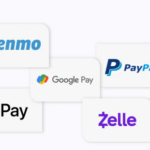About Clipper Airdrop
Clipper Airdrop is a new decentralized exchange (DEX) built for self-made traders, rather than hedge funds and whales. Clipper is designed to have the lowest per-transaction costs for small-to-medium-sized trades <$10K on the most popular cryptoassets.
As predicted in our speculative airdrop section, Clipper is airdropping 100 million tokens to various early community members. Adventure participants, Community members with Trader and LP roles and different Discord role holders are eligible for the airdrop.
Information
| Platform | Total value | Max. Participants | Website |
|---|---|---|---|
| ETH | 100 million | Unlimited | Click Here To Visit |
Step No 1
Register for the Clipper Airdrop by creating an account.
Step No 2
Verify your email & log in to your account.
Step No 3
Take part in the referral program and invite 3 friends.
Step No 4
Join Clipper Airdrop on Telegram group & Telegram channel.
Step No 5
Follow Clipper on Twitter & like/share the pinned tweet and tag 3 friends.
Step No 6
Like/follow Clipper Airdrop on Facebook & like/share the pinned post.
Step No 7
Submit your details to the Clipper Airdrop form.
LPs Profit
Clipper Airdrop is built to optimize Liquidity Provider (LP) profit. Most LP losses are incurred on swaps between pairs of blue-chip tokens. Clipper delivers sustainable returns by only executing trades that are profitable for LPs.
The Blue-Chip DEX
Clipper is a DEX designed specifically for blue-chip token swaps (e.g. ETH, WTBC, USD Stables, etc), which comprise 70% of all on-chain trading volume. Clipper’s novel architecture incorporates prices formed off-chain for these assets into a sophisticated formula and validates them on-chain. This removes the need for arbitrageurs and ensures lower gas fees for traders.
On Clipper, traders can expect no whales or bots front-running their trades, and liquidity providers take home superior yields with no impermanent loss. Clipper was initially developed by Shipyard Software and licensed to AdmiralDAO.
How Clipper Airdrop Works
Clipper’s design is contrary to that of most DEXs in several ways, the most significant being that it utilizes a unique market maker mechanism called the Formula Market Maker (FMM) rather than the Constant Product Market Maker (CPMM) used by most DEXs.
FMM Architecture
Clipper’s FMM is a hybrid mechanism that has both on-chain and off-chain components. It uses a more sophisticated pricing formula than the constant function used by CPMMs. The formula is part of the invariant function family that was developed in the original whitepaper on market making. Unlike CPMMs, whose pricing formulas only consider token ratios in pools, the FMM pricing function utilizes both token ratios and external, real-time market prices from centralized and decentralized oracles.
Clipper’s FMM performs pricing computations off-chain then verifies and validates them on-chain to prevent malicious quotes and determine if there have been any significant price changes between the time pricing data was pulled off-chain and applied to an on-chain swap. Clipper’s sophisticated pricing formulas and real-time price oracles are highly efficient; keeping the hard work of solving formulas off-chain and verifying them on-chain avoids high gas costs while keeping the entire system trustless and transparent.
How Clipper Avoids Impermanent Loss
There’s a major misconception that impermanent loss (IL) is an unavoidable feature of DEX liquidity pools. The misconception came about because most DEXs today utilize a CPMM and CPMMs are inherently prone to IL due to how they balance liquidity pool assets. Tokens on CPMM-based DEXs are priced by a constant function (x*y = k) and IL is caused by arbitrageurs exploiting discrepancies between the prices set by the CPMM and external market prices. While arbitrage activity keeps CPMM prices in line with the rest of the market, the profit arbitrageurs extract is siphoned from LP holdings.
How Clipper Avoids Impermanent Loss
AdmiralDAO is a decentralized autonomous organization governed by the community and supported by Admiralty LLC, a non-profit member-managed LLC domiciled in the Marshall Islands. The DAO controls a multisig wallet with several signers.
Trading
To prevent harmful bot activity, Clipper uses the following verification process to ensure that every wallet trading on the platform belongs to a human.
If your wallet has already been preverified, you’ll be able to trade right away. If not, you’ll be prompted to solve a captcha and your wallet will be validated on the backend and added to a whitelist for future reference. If for some reason your wallet validation fails, you’ll need to connect your Discord account in order to to be verified.
Trading Fees
There are no fees for traders on Clipper! Instead, Clipper takes a small portion of LP gains from each profitable trade. This means that for traders, the price quotes you see on Clipper have no explicit fees or hidden costs.
Clipper Airdrop Team

Clipper Airdrop Conclusion
In conclusion, Clipper stands as a pioneering force in the realm of decentralized exchanges (DEXs), breaking away from the traditional mold by prioritizing the needs and aspirations of individual traders. Unlike its counterparts catering to institutional giants, Clipper’s laser focus on self-made traders ushers in a new era of inclusivity and accessibility within the crypto market.
By targeting the specific niche of small-to-medium-sized trades, valued at less than $10,000, Clipper empowers traders who might have otherwise been overshadowed by the dominance of hedge funds and whales. Its innovative approach results in more equitable opportunities, amplifying the voices of those who have long been seeking a platform tailored to their preferences.
Central to Clipper’s appeal is its commitment to delivering the lowest per-transaction costs in the realm of popular cryptoassets. This not only enhances the potential for profit among individual traders but also reduces the entry barriers that can dissuade newcomers from entering the crypto space.
Clipper Airdrop FAQ
What is Clipper?
Clipper is a revolutionary decentralized exchange (DEX) that caters specifically to self-made traders in the cryptocurrency market. Unlike traditional exchanges that often prioritize institutional players like hedge funds and whales, Clipper is designed to empower individual traders, offering them a platform tailored to their needs and preferences.
How is Clipper different from other DEXs?
Clipper’s unique differentiator lies in its laser focus on self-made traders. While other DEXs might cater to a broader audience, Clipper’s mission is to provide an inclusive and accessible trading environment for small-to-medium-sized trades valued at less than $10,000. This sets it apart as a platform dedicated to empowering individual traders rather than catering primarily to institutional players.
How does Clipper reduce costs for small-to-medium-sized trades?
Clipper’s architecture and trading fee structure are designed to minimize costs for smaller trades. By catering to trades valued at less than $10,000, the platform ensures that the trading fees remain competitive and affordable for individual traders. This approach encourages participation from a wider range of traders, democratizing the trading experience
Which cryptoassets are supported on Clipper?
Clipper focuses on the most popular cryptoassets, ensuring that traders have access to a diverse range of options. While the exact list of supported assets may vary, the platform is designed to offer a selection of well-established and widely traded cryptocurrencies.








